
BIOCONTROL
Scope & Guideline
Connecting researchers to cultivate the future of sustainable agriculture.
Introduction
Aims and Scopes
- Biological Control Mechanisms:
The journal focuses on understanding the diverse mechanisms of biological control, including parasitism, predation, and competition among organisms, which play critical roles in regulating pest populations. - Ecological Interactions:
It emphasizes the ecological interactions between biological control agents and their environments, including the roles of host specificity, multitrophic interactions, and community dynamics in successful pest management. - Innovative Applications:
The journal highlights innovative applications of biological control, such as the use of entomopathogenic fungi, nematodes, and bacteria, alongside companion planting and integrated pest management strategies. - Impact Assessments:
Research published in 'BIOCONTROL' often examines the economic and ecological impacts of biological control programs, providing insights into their effectiveness and sustainability. - Emerging Technologies:
The journal explores the integration of molecular techniques and biotechnological advancements in enhancing the efficacy of biological control agents.
Trending and Emerging
- Sustainable Agricultural Practices:
There is a growing emphasis on sustainable agricultural practices that integrate biological control with other pest management strategies, highlighting the importance of ecological sustainability and resilience in food systems. - Molecular and Genetic Approaches:
Recent publications indicate a trend towards the use of molecular and genetic techniques to enhance the understanding and application of biological control agents, including genetic modifications and molecular markers. - Climate Change Impacts:
Research addressing the impacts of climate change on biological control dynamics is increasingly prominent, focusing on how changing environmental conditions affect the efficacy and behavior of biological control agents. - Urban and Peri-Urban Biocontrol:
An emerging theme involves the exploration of biological control in urban and peri-urban environments, recognizing the role of green spaces and urban gardens in pest management. - Multi-Trophic Interactions:
There is a notable trend towards studying multi-trophic interactions, where researchers investigate the complex relationships between plants, herbivores, and their natural enemies, enhancing the understanding of ecosystem dynamics.
Declining or Waning
- Classical Biological Control:
There has been a noticeable decline in research focused solely on classical biological control methods, which traditionally involved the introduction of natural enemies to control invasive species. This shift may be due to increased interest in more integrated and sustainable pest management approaches. - Chemical Interactions:
Research specifically centered on chemical interactions between pests and biological control agents is less frequently addressed, indicating a potential waning interest in this aspect in favor of broader ecological studies. - Invasive Species Management:
Although still relevant, the frequency of publications solely focused on the management of invasive species using biological control has decreased, as researchers are increasingly addressing broader ecological impacts and multi-species interactions.
Similar Journals
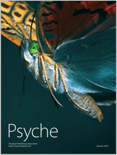
Psyche-A Journal of Entomology
Fostering Innovation in Entomology ResearchPsyche-A Journal of Entomology is a distinguished open-access journal published by Hindawi Ltd, specializing in the field of entomology, including aspects of ecology, evolution, behavior, and systematics of insects. Established in 1874, this journal has a rich history of contributing to the scientific community by disseminating high-quality research related to insects and their diverse interactions within ecosystems. With an impact factor placing it in Q3 for both Ecology, Evolution, Behavior and Systematics and Insect Science, Psyche serves as a pivotal platform for researchers, professionals, and students aiming to deepen their understanding of insect-related science. The journal's commitment to open access ensures that research is accessible to a global audience, promoting collaboration and innovation in entomological studies. Covering a broad timeline of converged years from 1874 to 2024, Psyche fosters a comprehensive dialogue around insect biodiversity, conservation, and the ever-evolving dynamics of ecosystems in which insects play crucial roles.
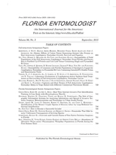
FLORIDA ENTOMOLOGIST
Illuminating the Path of Insect Science and EcologyFLORIDA ENTOMOLOGIST is a prestigious peer-reviewed journal dedicated to the advancement of entomological sciences, published by Walter de Gruyter GmbH. Since its transition to open access in 1994, the journal has become a vital resource for researchers, students, and professionals in the fields of Insect Science and Ecology, Evolution, Behavior, and Systematics. With an impact factor ranking high in its category—Q2 in Insect Science and Q3 in Ecology, Evolution, Behavior and Systematics—the journal showcases significant findings and contributions that shape our understanding of insect biology and its implications for ecological systems. The journal is indexed in Scopus, further establishing its relevance, with current rankings reflecting its competitive standing within Agricultural and Biological Sciences. Published continuously since 1982, FLORIDA ENTOMOLOGIST not only facilitates the dissemination of knowledge among entomologists but also encourages interdisciplinary collaboration, making it an essential publication for anyone invested in the scientific study of insects.
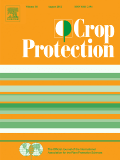
Crop Protection
Unveiling the future of crop science and protection.Crop Protection is a leading academic journal in the field of Agronomy and Crop Science, published by Elsevier Science Ltd, and recognized for its high impact demonstrated by an impressive Q1 quartile ranking in 2023. With its ISSN 0261-2194 and E-ISSN 1873-6904, this esteemed publication has been a crucial source of research since its inception in 1982, continuing to provide valuable insights and advancements in crop protection strategies through 2024. The journal serves a diverse audience, including researchers, professionals, and students, eager to explore pioneering findings in pest management, herbicide development, and sustainable agricultural practices. While the journal does not offer open access options, its rigorous peer-review process ensures the highest quality of scholarly articles that contribute significantly to the agricultural and biological sciences, maintaining its respected position with a Scopus rank of #63 out of 406 in its category, placing it in the 84th percentile. Engaging with Crop Protection not only enriches knowledge but also promotes innovative solutions for global agricultural challenges.

EXPERIMENTAL AND APPLIED ACAROLOGY
Advancing the Frontiers of Acarology ResearchEXPERIMENTAL AND APPLIED ACAROLOGY is a leading international journal that serves as a premier platform for the dissemination of cutting-edge research in the fields of Ecology, Insect Science, and Medical applications related to acarology. Published by Springer, this esteemed journal has been pivotal in advancing our understanding of mite-related science since its inception in 1985, and it anticipates continued publication until 2024. With an impressive ranking in the Q2 quartile across multiple categories, including Ecology (Rank #154/461) and Insect Science (Rank #42/181), it firmly establishes itself as a significant contributor to the scientific community. Although not an Open Access journal, its rigorous peer-review process ensures high-quality publication standards, appealing to researchers, professionals, and students alike. Aiming to bridge gaps between experimental research and practical applications, EXPERIMENTAL AND APPLIED ACAROLOGY plays a crucial role in enhancing knowledge and discoveries related to acarology, highlighting its vital importance in ecology and health sciences.
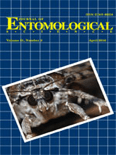
JOURNAL OF ENTOMOLOGICAL SCIENCE
Connecting Scholars through Entomological ExcellenceJOURNAL OF ENTOMOLOGICAL SCIENCE, published by the Georgia Entomological Society Inc, is a crucial resource in the field of insect science and ecology. With a rich history since its inception in 1993, the journal provides a platform for innovative research and comprehensive reviews addressing various aspects of entomology. Although not an open-access journal, it is highly regarded within its community, holding a Q3 ranking in Agronomy and Crop Science, Ecology, Evolution, Behavior and Systematics, and Insect Science as of 2023. Each issue promises to contribute valuable insights to professionals, researchers, and students alike, making it an essential publication for those looking to stay abreast of developments in entomological studies. The journal's editorial commitment ensures that it remains at the forefront of entomological research through rigorous peer reviews and a dedication to scholarly excellence.

APPLIED ENTOMOLOGY AND ZOOLOGY
Unlocking the complexities of insect interactions with the environment.Applied Entomology and Zoology, published by Springer Japan KK, is a pivotal journal in the field of insect science, with an impressive track record since its inception in 1966. This esteemed publication, bearing ISSN 0003-6862 and E-ISSN 1347-605X, contributes significantly to the understanding of applied entomology, emphasizing research that supports sustainable agricultural practices and the ecological conservation of insects. Ranked in the Q2 category (2023) for Insect Science with a Scopus rank of #65 out of 181, it is recognized for its rigorous peer-review process and high-quality contributions that push the boundaries of our knowledge. Although it does not currently offer open access, the journal remains an essential resource for researchers, professionals, and students eager to advance their understanding of the complex interactions between insects and their environment. With a focus on practical applications, it aims to bridge the gap between entomological research and real-world implications, fostering innovation and promoting informed decision-making within the scientific community.
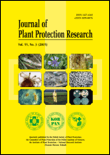
JOURNAL OF PLANT PROTECTION RESEARCH
Bridging science and practice for a healthier planet.JOURNAL OF PLANT PROTECTION RESEARCH is a pivotal publication in the realm of agricultural sciences, dedicated to advancing our understanding of plant protection and pest management. Published by the INST OCHRONY ROSLIN, PANSTWOWY INST BADAWCZY in Poland, this journal has been an open-access venue since 2008, ensuring that research findings are readily accessible to a global audience. With an ISSN of 1427-4345 and E-ISSN of 1899-007X, it serves as a crucial platform for scholars and practitioners in the fields of Agronomy, Plant Science, and Soil Science. In the latest categorizations, it has achieved a Q3 ranking in these disciplines, reflecting its impact and significance within the scientific community. As the journal converges its scope from 2008 to 2024, it continues to address pressing issues in plant health and sustainability. Its strategic placement within the Scopus ranks offers valuable insights into agricultural and biological sciences, making it an essential read for those seeking to enhance their expertise in plant protection strategies.
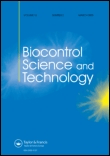
BIOCONTROL SCIENCE AND TECHNOLOGY
Advancing Sustainable Solutions in Agronomy and Insect ScienceBIOCONTROL SCIENCE AND TECHNOLOGY is a premier, peer-reviewed journal published by Taylor & Francis Ltd that specializes in the dynamic fields of Agronomy and Insect Science. Established in 1991, this journal has garnered a reputation for disseminating high-quality, impactful research with an impressive 2023 Scopus rank of 53 out of 181 in Insect Science and 153 out of 406 in Agronomy, placing it in the Q2 category for both fields. With its ISSN 0958-3157 and E-ISSN 1360-0478, the journal serves as a vital resource for researchers, professionals, and students dedicated to advancing understanding and innovation in pest management and biocontrol strategies. Although not an open-access journal, it offers comprehensive insights that are crucial for professionals aiming to tackle agricultural challenges and enhance food security. The journal’s continuous coverage from 1991 to 2024 ensures that it remains at the forefront of significant advancements in biocontrol, making it an essential read for anyone interested in sustainable agricultural practices and integrated pest management.

Persian Journal of Acarology
Exploring the intricate world of mites and ticks.The Persian Journal of Acarology, published by the Acariology Society of Iran, stands as a pivotal resource in the fields of Animal Science, Zoology, and Insect Science. Established in 2012 as an open-access platform, this journal provides researchers and academics with a rich repository of peer-reviewed articles focused on the study of acarology, encompassing both basic and applied research. With its current ranking in the Q3 category and significant Scopus rankings in related fields, the journal fosters scholarly communication among professionals, facilitating the advancement of acarology globally. The journal’s commitment to open access ensures that valuable research is available to a wide audience, supporting both emerging and established scientists in their pursuit of knowledge. With contributions from distinguished authors and a steady trajectory of growth, the Persian Journal of Acarology is a vital tool for those invested in the future of acarological studies and applied entomology.

JOURNAL OF STORED PRODUCTS RESEARCH
Leading the Way in Stored Products ResearchJOURNAL OF STORED PRODUCTS RESEARCH, published by PERGAMON-ELSEVIER SCIENCE LTD, is a leading academic journal in the fields of Agronomy and Crop Science, Food Science, Horticulture, and Insect Science. With ISSN 0022-474X and E-ISSN 1879-1212, this journal has been a cornerstone of research since its inception in 1965 and continues to contribute valuable insights into the science of stored products through its rigorous peer-reviewed articles. Recognized in 2023 with top rankings in various categories (Q1 in Agronomy and Crop Science, and Horticulture; Q2 in Food Science), its commitment to addressing the challenges in the preservation and quality of stored products is reflected in its substantial impact factor and robust Scopus rankings. Although it does not operate under Open Access, the journal remains crucial for professionals and researchers seeking to advance their understanding and application of stored product science. Located in the United Kingdom, at The Boulevard, Langford Lane, Kidlington, Oxford OX5 1GB, England, the journal stands as a pivotal resource for those committed to enhancing agricultural sustainability and food security.